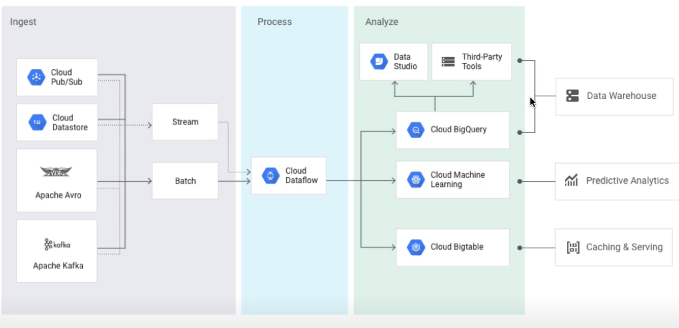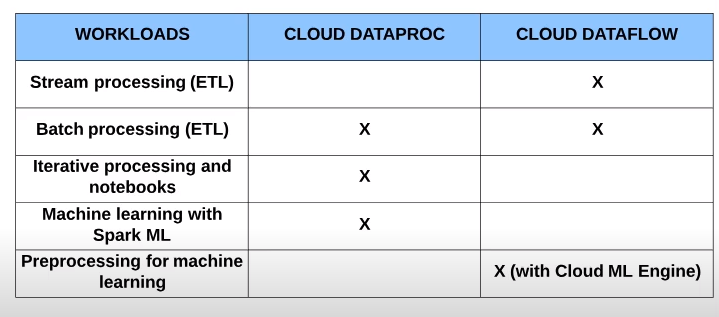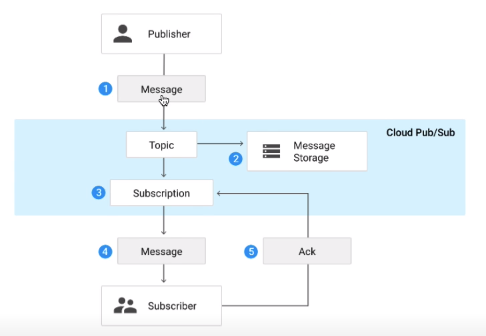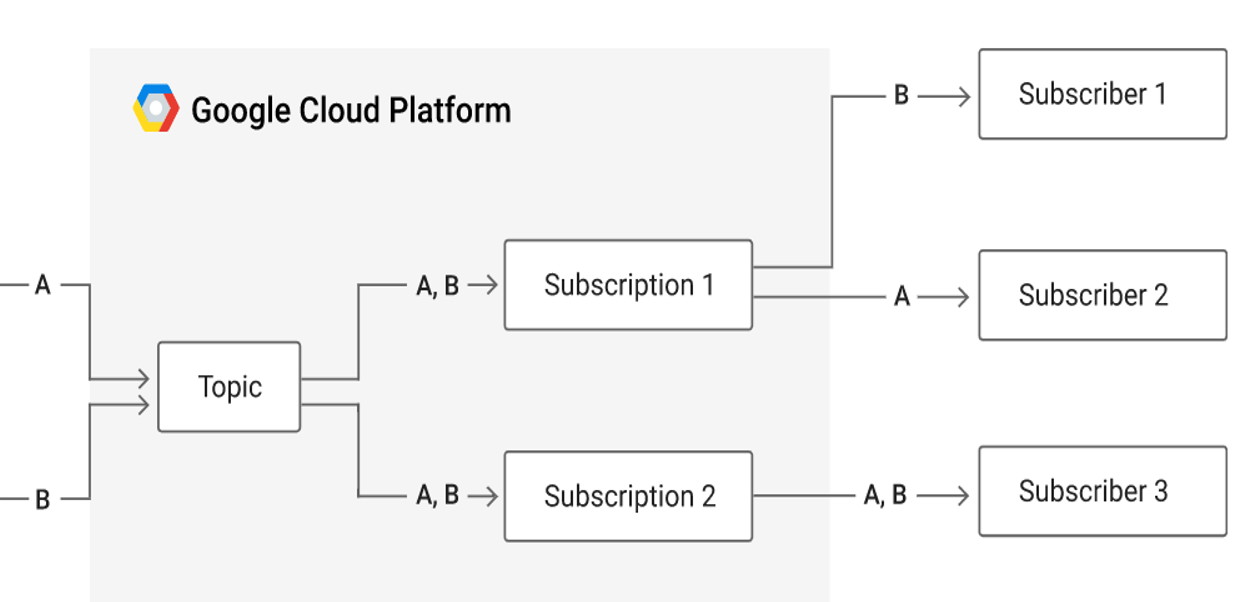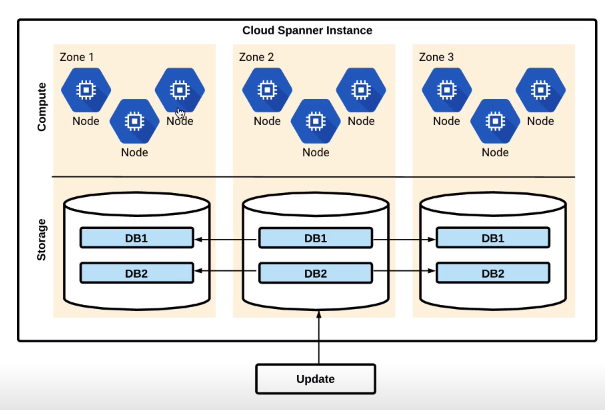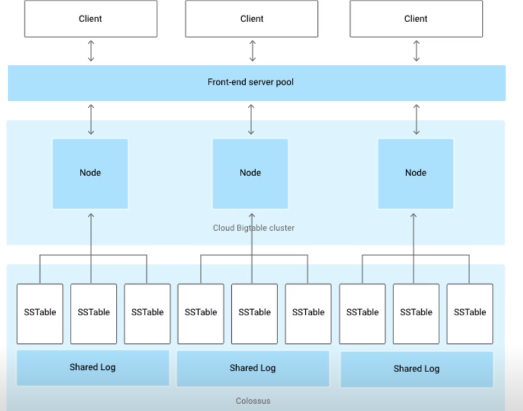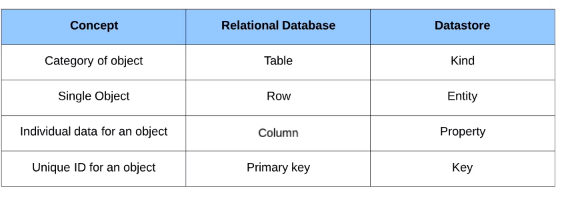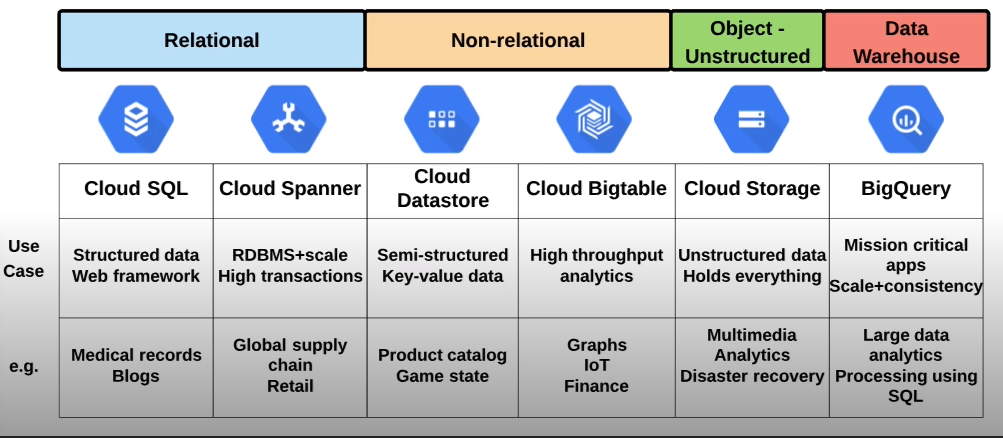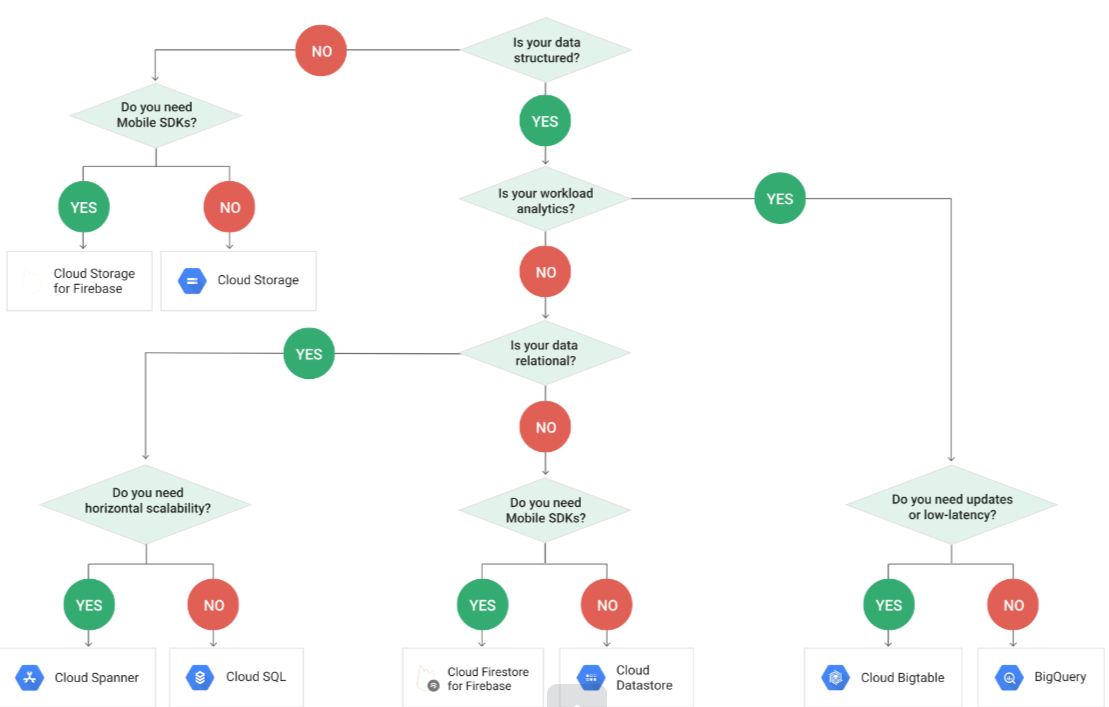Big Data
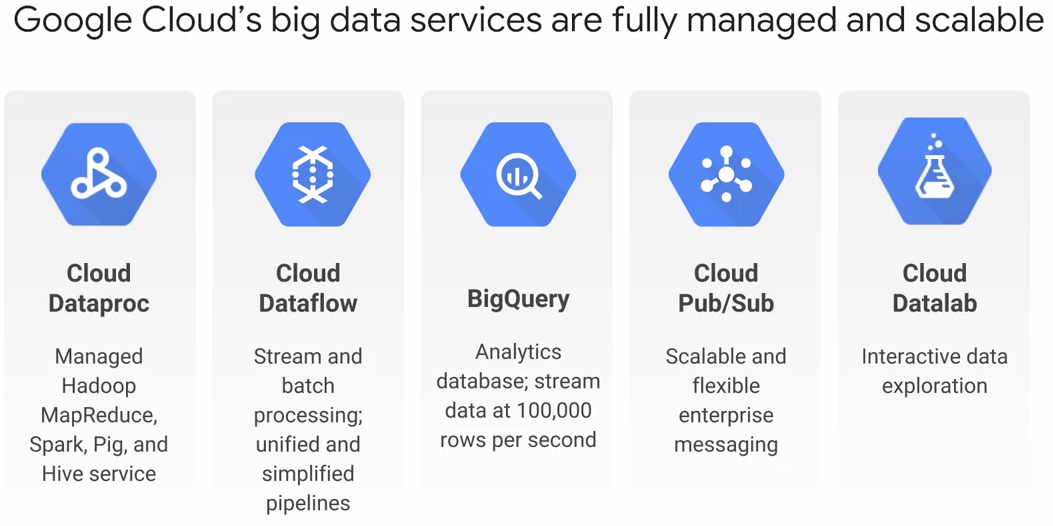
Serverless means you don’t have to worry about provisioning compute instances to run your jobs. the services are fully managed.
Cloud Dataproc
is managed Hadoop
- Fast, easy, managed way to run Hadoop, Spark/Hive/Pig on GCP
- Create clusters in 90 seconds
- Scale clusters up and down even when jobs are running
- Easily migrate on-premises Hadoop jobs to the cloud
- Save money with preemptible instances
Cloud Dataflow
is managed data pipelines
- Processes data using Compute Engine
- Clusters are sized for you
- Automated scaling
- Write code for batch and streaming
Why use Cloud Dataflow?
- ETL
- Data analytics: batch or streaming
- Orchestration: create pipelines that coordinate services, including external services
- Integrates with GCP services
Big Query
is managed data warehouse
- It provides near real-time interactive analysis of massive dataset using SQL
- No cluster maintenance
- Compute and Storage are separated with a terabit network in between
- You only pay for storage and processing used
- Automatic discount for long-term data storage(when data reaches 90 days in BigQuery, google drops the price of storage)
Cloud Pub/Sub
is scalable, reliable messaging
- Supports many-to-many asynchronous messaging
- Push/pull to topics
- Support for offline consumers
- At least once delivery policy
Cloud Datalab
interactive data exploration(Notebook)
Built on Jupyter(formerly IPython)
Easily deploy models to BigQuery. You can visualize data with Google Charts or map plot line
- TensorFlow
- Cloud ML
- Machine Learning APIs
Why use CLoud Machine Learning Platform?
- Classification and regression
- Recommendation
- Anomaly detection
- Image and video analytics
- Text analytics
CLoud Vision API
- Gain insight from images
- Detect inappropriate content
- Analyze sentiment
- Extract text
Cloud Natural Language API
- can return text in real time
- Highly accurate, even in noisy environments
- Access from any device
Cloud Translation API
- Translate strings
- Programmatically detect a document’s language
- Support for dozen’s languages
Cloud Video Intelligence API
- Annotate the contents of video
- Detect scene changes
- Flag inappropriate content
- Support for a variety of video formats

